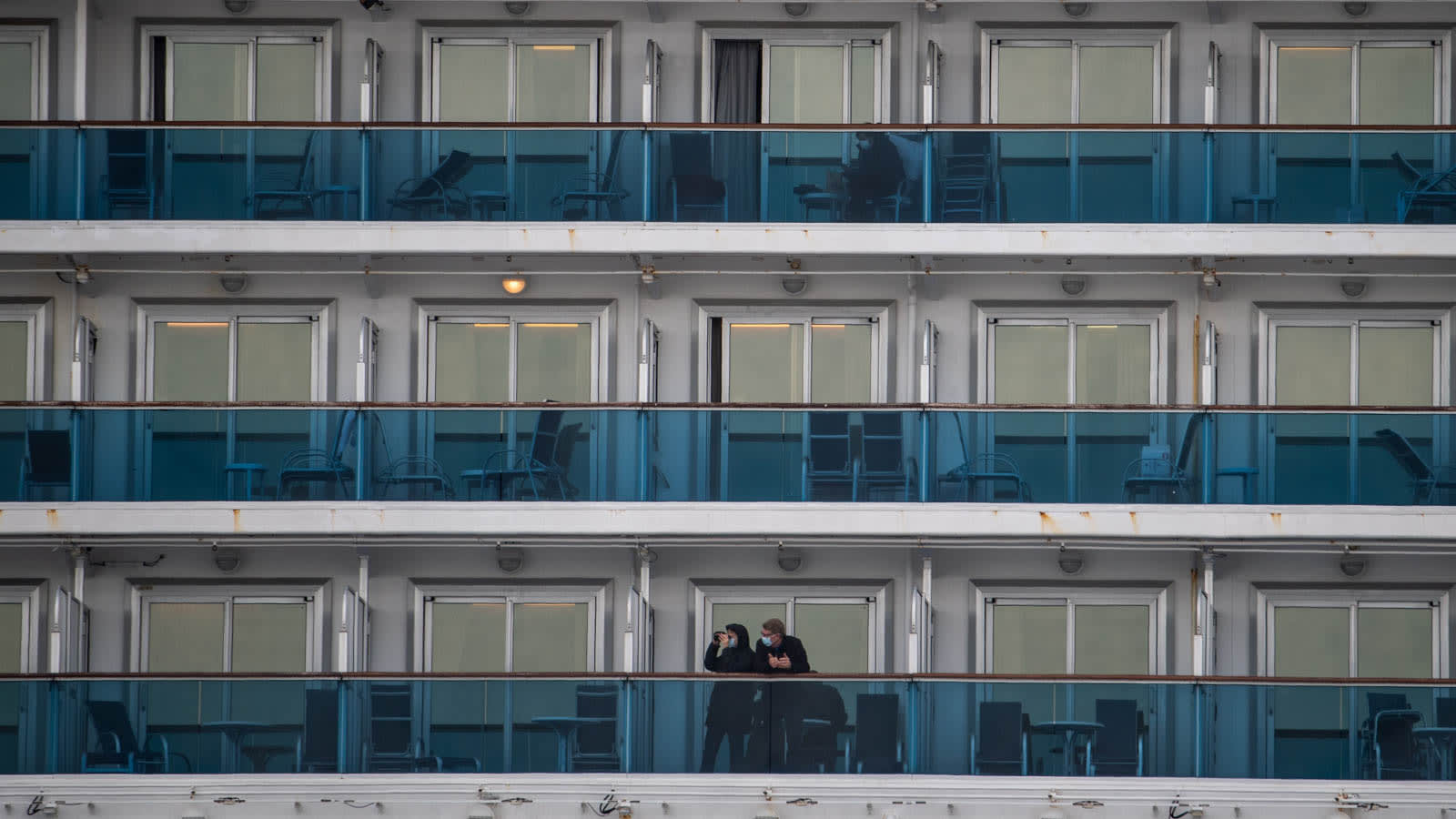دبي، الإمارات العربية المتحدة (CNN)-- يكافح قطاع الطيران من أجل النجاة. ومع استمرار جائحة فيروس كورونا في النمو، يواجه قطاع السفر مستقبلاً غامضاً، وهو يسعى جاهداً للتكيّف.
وفي أعقاب تفشي فيروس كورونا المستجد عالمياً، تبنت شركات الطيران إجراءات تنظيف صارمة تتراوح من إيقاف خدمة المناشف الساخنة، إلى تنظيف الطائرات بأكملها بالمطهرات.
ومع توفر المزيد من البيانات حول كيفية انتشار الفيروس، قد تزداد هذه الإجراءات، وقد يصل الأمر إلى إعادة النظر في بعض جوانب تصميم كابينة الطائرات.
وما الذي يمكن أن يتوقعه الركاب في المستقبل لتحقيقهم لراحة البال عندما يأتي الأمر لانتشار الأمراض؟
التنقل بين الأماكن

يُعد الجلوس في نطاق مقعدين من شخص مصاب خلال رحلة جويّة عامل خطر أساسي بموجب إرشادات منظمة الصحة العالمية، ولكن يمكن للركاب الذين يتنقلون خلال الرحلة زيادة احتمال انتقال العدوى.
وخلال رحلة جوية أثناء تفشّي مرض "سارس" في عام 2003، أصاب أحد الركاب 22 شخصاً من أصل 120 راكب على متن الطائرة، ويشير هذا إلى أن الأشخاص الذين يجلسون خارج نطاق مقعدين من الشخص المصاب معرضون للخطر أيضاً.
ومع ذلك، وجد فريق من الباحثين الذين يدرسون سلوك الركاب في 10 رحلات عبر القارات في عام 2018 أنه رغم تنقل 62% من المسافرين أثناء تحليق الطائرة، إلا أنه لم تحتوي أي من العينات السطحية والهوائية الـ229 التي تم جمعها أي آثار لأمراض الجهاز التنفسي.
وقالت عالمة الإحصاء الحيوي في جامعة "إيموري" في أتلانتا بالولايات المتحدة التي قادت البحث، فيكي ستوفر هيرتزبيرغ: "ما وجدناه هو أن البكتيريا الموجودة على متن الطائرة تشبه إلى حد كبير ما قد تجده في منزلك، وفي مكتبك، أو في الأماكن التي يرتادها الأشخاص عادةً".
كما أنها أضافت أن حالات إصابة الأشخاص بالمرض نتيجة الاتصال بشخص على متن الطائرة قليلة ومتباعدة.
ومع ذلك، إلا أن هيرتزبيرغ أشادت بإجراءات النظافة الجديدة التي الطائرات.
تصفية الهواء

تُجهّز الطائرات الحديثة بمصفيات هواء خاصّة تُدعى "HEPA" شبيهة بالتي توجد في غرف العمليات في المستشفيات.
ومع ذلك، يجادل أستاذ الهندسة الميكانيكية في جامعة "بوردو" في إنديانا، تشينغيان تشين، الذي أجرى بحثاً عن انتشار جزيئات الهواء في السيارات وكيفية تعقبها، أن ذلك لا يعني أن كل الهواء في مقصورات الطائرات نظيفة.
ويؤدي عطس، وسعال، وتحدث، وتنفس شخص ما إلى انتشار قطرات قد تنتقل إلى للركاب المجاورين قبل أن يتمكن مرشح "HEPA" من الالتقاط بها.
ولذلك، اقترح تشين نوعاً جديداً لنظام تهوية يُكوّن غلافاً من الهواء يُحيط بكل مسافر بدون مزجه مع الهواء الذي يتنفسه الأشخاص المجاورون، ويستخدم تصميم تشين مرشح مخصص لكل مقعد عند مستوى القدم.
إجراءات الصعود

ويُعتبر خطر الإصابة بمرض معدي في طائرة أقل مقارنةً بأماكن محصورة أخرى، وفقاً لاتحاد النقل الجوي الدولي.
وقد تكون أجزاء أخرى من الرحلة أكثر خطورة من الوقت الذي يقضيه المرء في الطائرة ذاتها، مثل إجراءات الصعود إلى الطائرة.
واستجابةً لتفشّي إيبولا في عام 2014، درس فريق من الباحثين طرق بديلة للصعود على متن الطائرة تشكل خطراً أقل لانتقال العدوى.
ووجد البحث أن صعود الركاب بشكل عشوائي يقلل خطر العدوى، وذلك لأن الأشخاص كانوا أقل عرضة لقضاء فترات طويلة بالقرب من بعضهم البعض.
ولكن، يترتب عن الأمر فترة انتظار أطول.
تُعد السفن "حاضنات"

تضررت السفن السياحية بشكل أكبر من فيروس كورونا المستجد، وكانت أكبر مجموعة من الإصابات على متن سفينة الرحلات البحرية "Diamond Princess"، إذ أُصيب قرابة 20% من الذين كانوا على متنها بالعدوى.
ويعتقد تشين أن الركاب أُصيبوا بالعدوى بسبب أنظمة التهوية التي نشرت الفيروس من مقصورة إلى أخرى عبر إعادة تدوير الهواء الملوث الذي يحتوي قطرات صغيرة نتجت من العطس أو السعال.
ويمكن للفيروس، الذي أصبح يُعرف بـ"كوفيد-19"، البقاء في تلك القطرات لقرابة 3 ساعات، بينما تستطيع البقاء لـ3 أيام على أسطح مثل البلاستيك والمعادن، وفقاً لبحث أجرته المعاهد الوطنية الأمريكية للصحة.
والحل الأسرع يكمن في استخدام مرشحات "HEPA"، حسب ما قاله.







